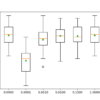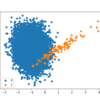In a previous tutorial, we explored logistic regression as a simple but popular machine learning algorithm for binary classification implemented in the OpenCV library. So far, we have seen how logistic regression may be applied to a custom two-class dataset we have generated ourselves. In this tutorial, you will learn how the standard logistic regression […]










